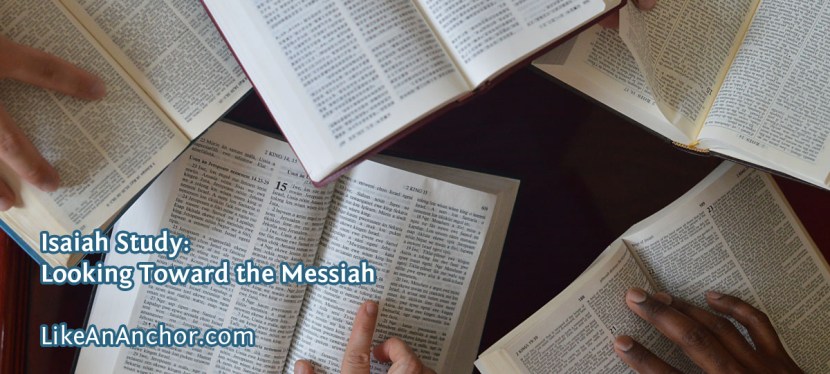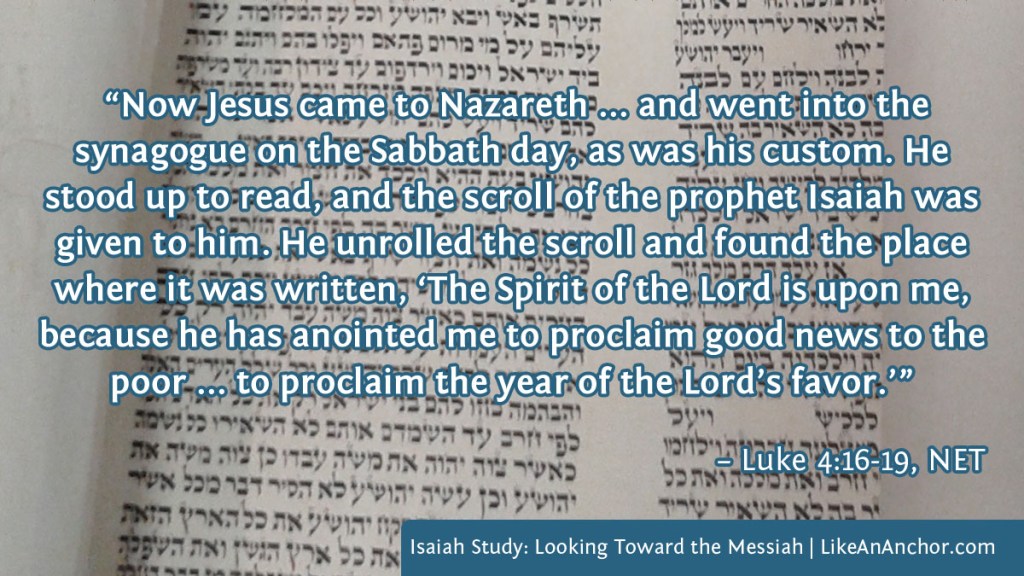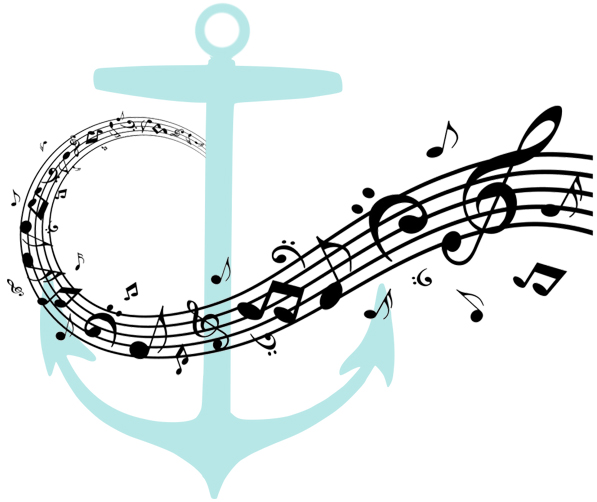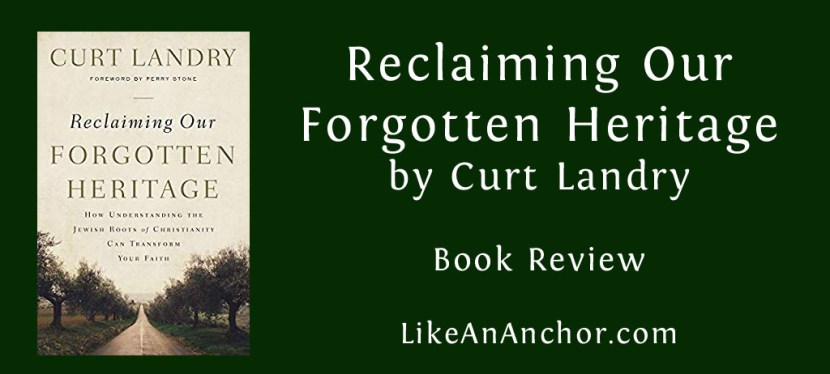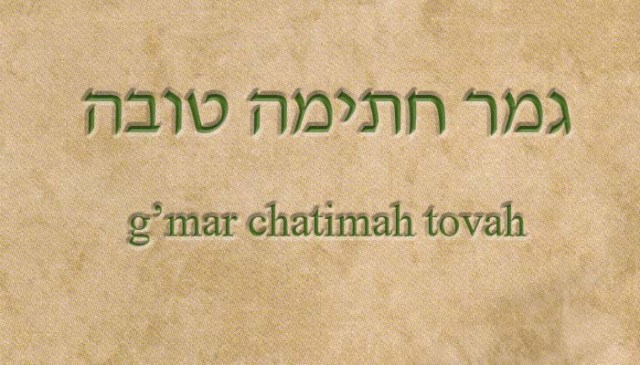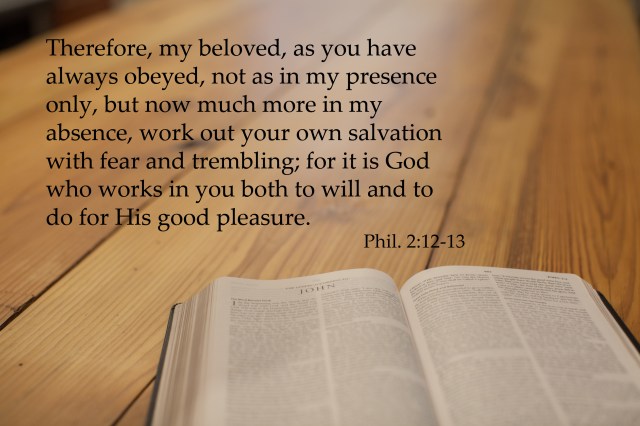In Jewish communities, and many Messianic Jewish groups as well, there’s a tradition of reading through the Torah once a year. The first five books of the Bible (the Law or Torah) are divided into sections called parashot. Those are paired with selections from the Prophets, called haftarot, that link the Torah to events in Israel’s history. All around the world, synagogues read the same sections each week. They’ve been doing this on the same schedule every year since around 400-500 AD.
I already knew about the Torah portions from my time attending with a Messianic congregation, so that didn’t surprise me when I read about it in Reading the Bible with Rabbi Jesus: How a Jewish Perspective Can Transform Your Understanding by Lois Tverberg. But I was surprised to learn this tradition is based on one that’s much older. In 1806, thousands of early Jewish texts were discovered that included “multiple synagogue lectionary lists” splitting the Torah into “150-170 readings, likely taking about three and a half years to complete” (Tverberg p. 195-96). This older tradition read through the Torah just like people do today, but the selected readings from the prophets were different. In the older tradition, the readings are more focused on “a glorious future kingdom and a coming Messianic age” (p. 197).
So what does all this have to do with our ongoing study of Isaiah 40-66? While we can’t know exactly which passages from the Prophets Jesus and His followers heard alongside the Torah in their synagogues (the liturgy readings weren’t standardized until later) we can make a reasonable guess based on the early scripture lists we do have. In those lists, “over half of the prophetic readings came from Isaiah, especially chapters 40-66, which focus on promises of redemption and renewal” (Tverberg p. 199). Those are the same passages we’ve been studying. They’re also passages that Jesus quoted and Paul references in many of his letters (click here for a list of Isaiah quotes in the New Testament).
If you’re familiar with the Servant Song prophecies in Isaiah, the choice of these scriptures to point toward the Messiah shouldn’t come as a surprise. All four of these famous Messianic prophecies come from the last part of Isaiah. Those aren’t the only Messianic messages in the final 27 chapters, though. If you read the first post in this series, you’ll see I made a list of key themes that I want to study more extensively. The list included (among other things) a focus on redemption, deliverance, salvation, and restoration that are connected to the promise that God will call a Servant to redeem His servants. This is also related to God’s covenant faithfulness; the Messiah is coming because God is faithful to His promises.
The Servant Songs
We’ve been talking about the Servant Songs for weeks now, but haven’t taken a close look at them yet. In my first post, I mentioned you can find these prophecies in Isaiah 42:1–9; 49:1–13; 50:4-11; 52:13– 53:12. I also said these aren’t the only the only prophecies in Isaiah 40-66 and that God’s words in this section aren’t just for people who were anticipating the Messiah’s first coming. They’re also for us today, who are awaiting Jesus’s second coming. We can see that as we look through the four servant songs all together.
First Song
The first Servant Song speaks of the Messiah as a servant chosen by God (Is. 42:1–9). The Servant “will bring justice to the nations” without shouting or raising his voice. This prophecy also speaks of Yahweh (the name God applies to Himself in Ex. 3:15) holding the Servant’s hand and making Him “a covenant for the people, as a light for the nations.” Yahweh affirms this will happen; it’s one of the “new things” He’s declaring in this section of Isaiah. You’ll find this first Servant Song quoted in Matthew 12:15-21, Luke 2:26-32, and Romans 15:12.
Second Song
The second Song is written in first-person; the Servant is speaking (Is. 49:1-13). He says, “Yahweh has called me from the womb” to accomplish reconciliation by bringing God’s covenant people back to Him. Again, Yahweh calls the Servant “a light to the nations, that you may be my salvation to the end of the earth.” This passage speaks of the Servant accomplishing powerful deliverance, backed-up with Yahweh’s power and might. It’s quoted in Luke 2:28-32, Acts 13:47, and 2 Corinthians 6:2. In Acts 13:47, Paul and Barnabas apply part of this prophecy to their work as they follow in the Messiah’s footsteps. This indicates that while the Servant Songs are Messianic (they point to Jesus), at least part of this one can also apply to those following in Jesus’s footsteps.
Third Song
The third song presents the Servant more as suffering than triumphant (Is. 50:4-11). It speaks of Yahweh teaching the servant and giving Him wisdom for working with people. It also speaks of the Servant voluntarily submitting to suffering inflicted by other people, and affirms that “the Lord Yahweh will help me.” Like the second Song, this one is written from the Servant’s perspective and affirms His trust in Yahweh. According to SimplyBible.com’s list of Isaiah quotes, this song is not quoted directly in the New Testament. I suspect, though, that the gospel writers might have had this Song in mind when they wrote about people being astonished at the wisdom and authority of Jesus’s teachings (Matt. 13:54; Mark 1:22; Luke 4:32).
Fourth Song
The final servant song might be the most famous (Is. 52:13– 53:12). It’s certainly the one I’m most familiar with; in my church we read it every Passover. It’s also the Servant song that’s most often quoted in the New Testament (Matt. 8:16-17; Mark 15:27-28; Luke 22:37; John 12:37-38; Acts 8:32; Rom. 10:16; 15:21; 1 Pet. 2:22-25). And that list only includes direct quotes; there are other scriptures, like Christ’s discussion of servants ruling kingdoms, that likely allude to this passage (Luke 22:25-30).
In this Passage, God says that His Servant “will cleanse many nations,” but in the process He will suffer so much His face will become unrecognizable. This is one of the Messianic prophecies that speaks most clearly and graphically of the terrible things Jesus suffered to pay the price for our transgressions. Again, there are themes of justice and light, as well as inheriting a kingdom, but the focus is on the suffering of Messiah and what He means to accomplish with with His suffering.
A Mission of Redemption, Salvation, and Release
In the WEB translation for Isaiah 40-66, the word “redeem” shows up 24 times. “Salvation” is here 19 times and “save” 12 times. “Deliver” is used 12 times. “Help” 10 times. “Restore” is here 4 times, “release” 3 times, and “preserve” 2 times. (These numbers also include related words like “deliverer” and “redeemed”). These words related to God’s work in saving His people show up all through Isaiah 40-66; not just in the Servant Songs. Throughout these chapters, God is focused on the redemption, salvation, deliverance, and restoration of His people. He’s sharing His plans to help, release, and preserve us.
But now Yahweh who created you, Jacob,
Isaiah 43:1-3, WEB
and he who formed you, Israel, says:
“Don’t be afraid, for I have redeemed you.
I have called you by your name.
You are mine.
When you pass through the waters, I will be with you,
and through the rivers, they will not overflow you.
When you walk through the fire, you will not be burned,
and flame will not scorch you.
For I am Yahweh your God,
the Holy One of Israel,
your Savior.”
Break out into joy!
Isaiah 52:9-10, WEB
Sing together, you waste places of Jerusalem;
for Yahweh has comforted his people.
He has redeemed Jerusalem.
Yahweh has made his holy arm bare in the eyes of all the nations.
All the ends of the earth have seen the salvation of our God.
The Lord Yahweh’s Spirit is on me,
Isaiah 61:1, WEB
because Yahweh has anointed me to preach good news to the humble.
He has sent me to bind up the broken hearted,
to proclaim liberty to the captives
and release to those who are bound,
Passages like these are found all around the Servant Songs, sprinkled throughout Isaiah 40-66. They reveal God’s redeeming purpose and join the Servant Songs in pointing toward the Messiah. Jesus even quoted the passage from Isaiah 61 (with one line added from Isaiah 58:6) when He went into the synagogue to His hometown on the Sabbath day. It appears that He was reading the Torah portion and associated passage from the Prophets that day, and used Isaiah 61 to teach about His role as God’s servant (Luke 4:15-21). The way He read this passage might not seem too startling to us, but by saying that He’s fulfilling this prophecy Jesus boldly proclaimed Himself as the Messiah. It was such a startling claim that His hearers were “filled with rage” and threw him out of town (Luke 4:22-30).
If you read through Isaiah 40-66, you’ll see God is talking about deliverance on multiple levels. He’s speaking to Ancient Israel at the time, promising deliverance from captivity. He’s also pointing to a time when the Messiah would come with spiritual deliverance from sin–that’s what happened when Jesus came to this earth and died for us. On top of that, God’s revelations at the end of Isaiah look farther forward to a time when the entire world will be renewed and restored.
A New Thing
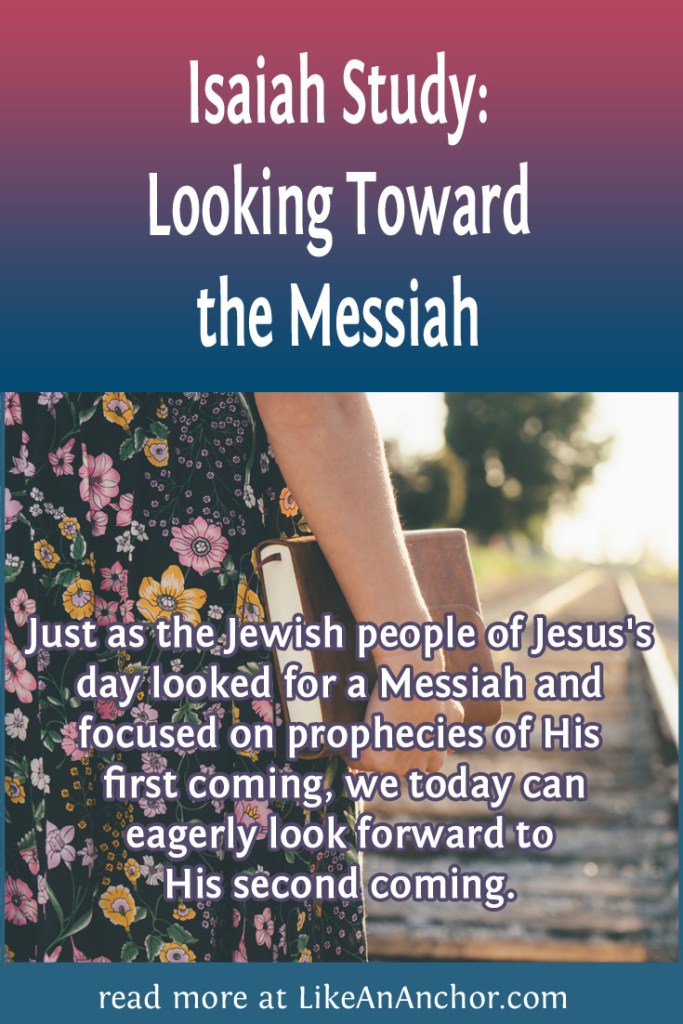
It’s fascinating to see links between the New and Old Testament. Studying these patterns gives us a deeper appreciation for the Bible and a deeper understanding of Jesus. Sometimes, though, it might not seem all that relevant today since the prophecies are already fulfilled. But we can still learn from them, and not all of them are entirely done yet. Just as the Jewish people of Jesus’s day looked for a Messiah and focused on prophecies of His first coming, we today can look forward eagerly to His second coming. Let’s take another look at the end of the first Servant Song prophecy.
“I am Yahweh.
That is my name.
I will not give my glory to another,
nor my praise to engraved images.
Behold, the former things have happened
and I declare new things.
I tell you about them before they come up.”Sing to Yahweh a new song,
Isaiah 42:9, 10, WEB
and his praise from the end of the earth,
you who go down to the sea,
and all that is therein,
the islands and their inhabitants.
While the Servant Song seems to wrap up in verse 9 (though Yahweh also discusses “my servant” in verses 18-19 while rebuking those who trust in false gods), a new song continues in verse 10. It’s the first time in this part of Isaiah that God directly states He’s doing something new and exciting. As we’ll see more thoroughly in next week’s post, this “new thing” that He’s doing with the Messiah is the beginning of a larger project to make all things new.
We’re still waiting for the complete fulfillment of the Messianic prophecies in Isaiah. Reading God’s promises to send the Messiah back to redeem us mightily, establish His kingdom, and complete His “new” work can still encourage us as we await Jesus’s return.
–
Featured image by Inbetween from Lightstock
Song Recommendation: “Hu Yavo (He Will Come)” by Joshua Aaron
